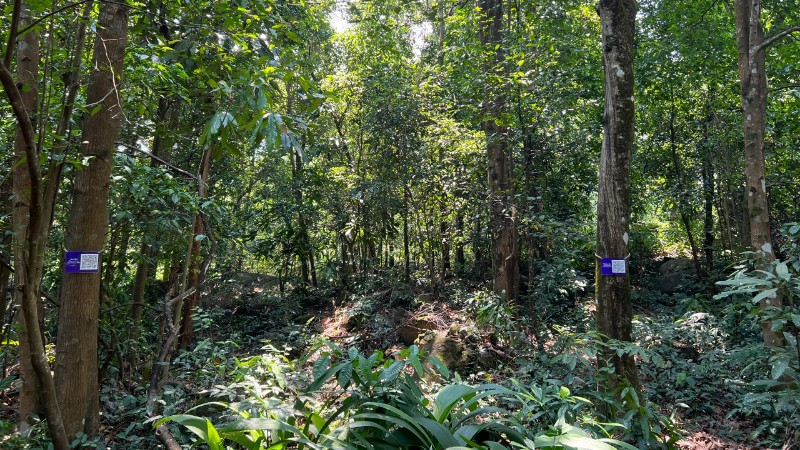
The Troi tree is attached with a QR code at Bac Hai Van.
Synchronously deploy legal regulations in the Target Program for Sustainable Forestry Development for the 2021-2025 period
In recent years, the Ministry of Agriculture and Environment has paid special attention to the work of building and perfecting institutions, policies and laws on forestry , considering this a key task to realize the goal of sustainable forestry development.
Implementing the Government's direction, the Ministry of Agriculture and Environment has reviewed, revised and issued many legal documents, guiding the implementation of the 2017 Forestry Law, ensuring consistency, uniformity and suitability to practice. This policy system comprehensively covers the following areas: forest management, protection, sustainable forest development, multi-purpose forest use, payment for forest environmental services (PFES), forestry economic development and forest product processing.
The completion of the legal framework has created favorable conditions for implementing the Sustainable Forestry Development Target Program for the 2021-2025 period, helping localities have a unified legal basis in planning, allocating resources and organizing the implementation of the program's tasks.
Up to now, the national forest cover has remained stable at over 42%, of which the forest area certified for sustainable forest management (FSC, VFCS) has reached over 800 thousand hectares. The export value of wood and forest products has reached about 14-15 billion USD per year, contributing significantly to the national economic growth.
Creating a legal corridor for effective forest management, protection and development
One of the highlights of Vietnam’s forestry policy is the payment mechanism for forest environmental services. With an average revenue of about 3,000 billion VND per year, this policy not only creates economic motivation for people to protect forests but also contributes to reducing pressure on the state budget and effectively mobilizing social resources. Hundreds of thousands of mountainous households have had more stable income from forests, have long-term attachment to forestry and proactively participated in community forest management models.
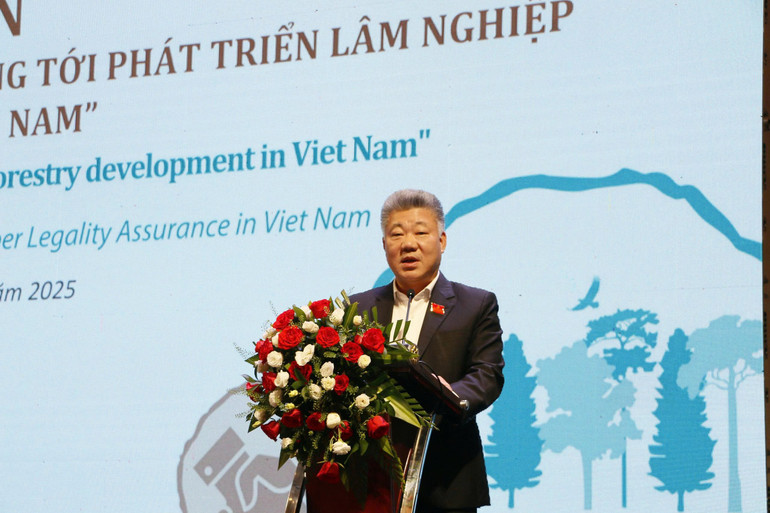
Mr. Nguyen Huu Thien, Deputy Director of the Department of Forestry and Forestry (Ministry of Agriculture and Environment).
Along with that, the system of legal documents on plantation development, natural forest management, biodiversity conservation and non-timber forest product development has been completed, contributing to promoting sustainable forestry production. Regulations on timber traceability, legal forest product trade and sustainable forest management certification help Vietnam meet international commitments such as the VPA/FLEGT Agreement, EVFTA, and expand export markets to Europe, the US and Japan.
In parallel with the policy improvement, the Ministry of Agriculture and Environment has strengthened inspection, supervision and implementation guidance in localities. Many models of sustainable forest management, large timber plantation, mixed forests and agroforestry have been replicated, both increasing economic value and protecting the natural ecosystem.
However, the implementation process also shows some difficulties such as overlaps in some legal regulations, limited investment resources, and sometimes unsynchronized coordination between sectors. These issues are being reviewed by the Ministry of Agriculture and Environment, with recommendations for adjustments in the coming period, to ensure the feasibility and effectiveness of the policy.
Bringing policies into life, towards a modern and integrated forestry industry
Towards the period 2026-2030, the forestry sector aims to develop in a green, modern and deeply international integrated direction. Accordingly, the improvement of policies and laws continues to be identified as an important pillar, the foundation for all activities of the sector.
The Ministry of Agriculture and Environment is developing a Sustainable Forestry Development Program for the 2026-2030 period with key contents such as: Amending and supplementing the Forestry Law and guiding documents to suit the new context, especially the requirements of green transformation, circular economy and the target of net zero emissions (NetZero) by 2050; Perfecting financial mechanisms, encouraging public-private partnerships, attracting businesses to invest in afforestation, wood and forest product processing; Innovating land policies, ensuring the legitimate rights and interests of communities, households, and economic organizations assigned and leased forests; Applying science and technology, digital transformation in forest resource management and monitoring, geographic information systems and traceability of forest products.
Mr. Nguyen Huu Thien, Deputy Director of the Department of Forestry and Forest Protection (Ministry of Agriculture and Environment) emphasized: “Completing policies and laws is the foundation for effectively implementing forestry programs and projects. When the legal framework is clear, the enforcement mechanism is transparent and the rights of the people are guaranteed, we will mobilize the whole society to participate in protecting and developing forests, towards a modern, sustainable and internationally integrated forestry sector.”
According to Mr. Thien, in the context of Vietnam promoting green growth and implementing global climate commitments, forestry is not only a technical economic sector but also the "green lung" of the country, playing an important role in ecological balance, protecting water resources, conserving biodiversity and reducing greenhouse gas emissions.
When policies are implemented synchronously, transparently and put into practice, Vietnam's forestry will not only contribute to green economic growth, but also become a sustainable ecological economic sector, contributing to the implementation of the national commitment to reducing greenhouse gas emissions and sustainable development of the country.






![[Photo] General Secretary To Lam and National Assembly Chairman Tran Thanh Man attend the 80th Anniversary of the Traditional Day of the Vietnamese Inspection Sector](https://vphoto.vietnam.vn/thumb/1200x675/vietnam/resource/IMAGE/2025/11/17/1763356362984_a2-bnd-7940-3561-jpg.webp)





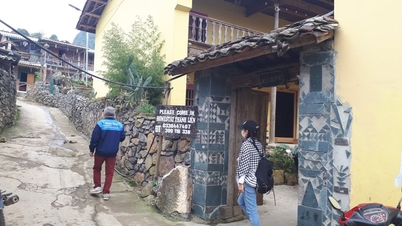


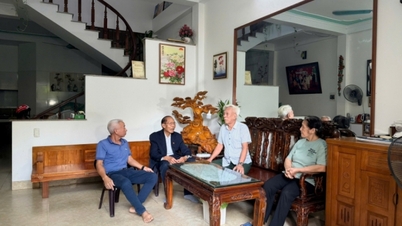

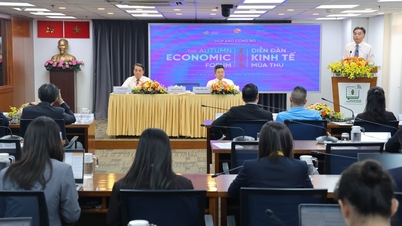


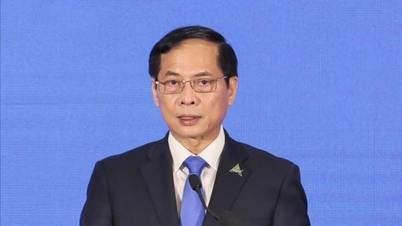

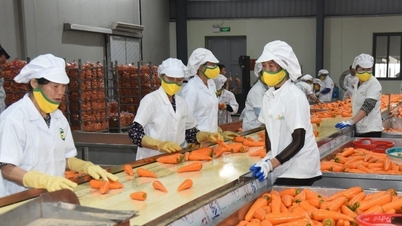
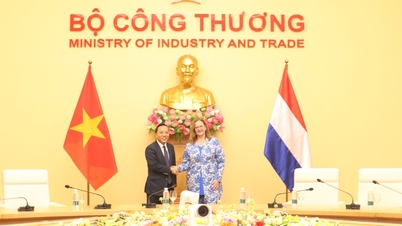

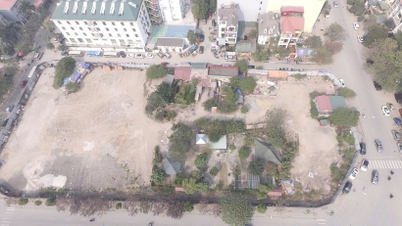











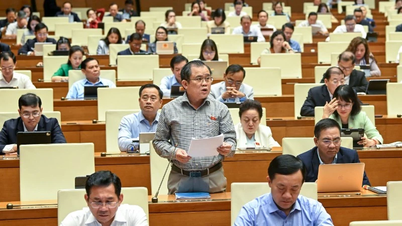
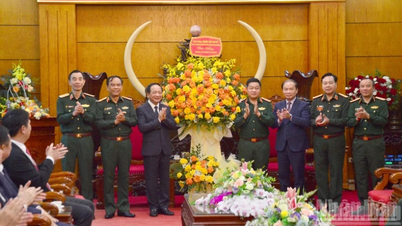













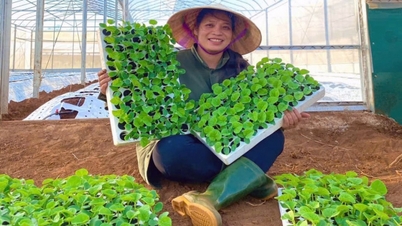












































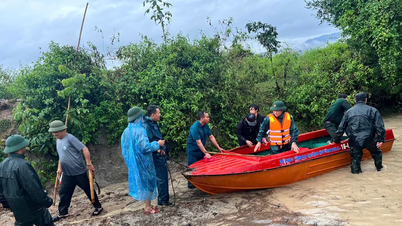













Comment (0)